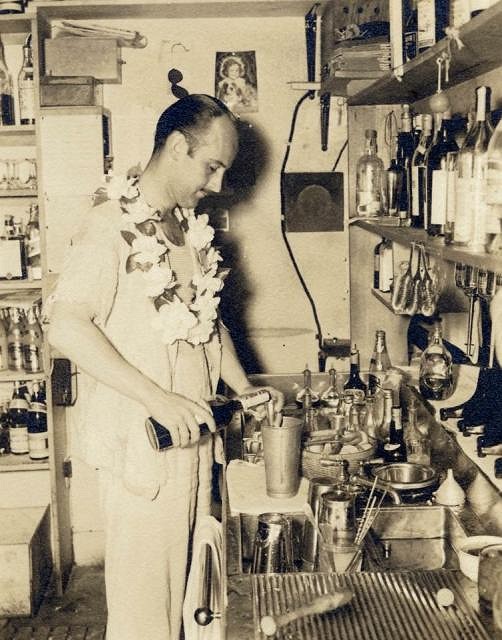Tiki Central / California Events / Don the Beachcomber's ON THE MOVE!
Post #765568 by Don The Beachcomber on Tue, Jun 28, 2016 11:05 AM
|
DTB
Don The Beachcomber
Posted
posted
on
Tue, Jun 28, 2016 11:05 AM
The real story behind Don the Beachcomber: In December 1931 a somewhat adrift 24-year-old washed up in Southern California, looking for something to do. A native of New Orleans, he was named Ernest Raymond Beaumont Gantt. In 1931, Gantt made a living in the Depression economy through his wits and odd jobs—working in restaurants in Chinatown, parking cars and doing a bit of freelance bootlegging in the months before Prohibition ended. Sociable and charming, he befriended such Hollywood personalities as David Niven and Marlene Dietrich, and through them found occasional work as a technical adviser on films set in the South Pacific. A couple of years after he arrived in Los Angeles, Gantt happened upon a newly vacated tailor shop just off Hollywood Boulevard. He built a bar that would seat about two dozen customers and scattered a few tables in the remaining space. He decorated the place with his South Pacific gewgaws, along with old nets and parts of wrecked boats he scavenged from the oceanfront. He called his watering hole Don the Beachcomber. Rum was the least expensive of the spirits in that era, and Gantt had sampled a variety in his world travels. He devised an exotic menu of rum-based drinks that complemented his theme and scratched the names on a board behind the bar. The combination of Gantt’s engaging personality and the novelty of his drinks proved irresistible to his patrons. Among those first drinks was the Sumatra Kula, which cost a quarter. A well-dressed man named Neil Vanderbilt came in one day and ordered one, then another and another. He said it was the best drink he’d had in years. He was a writer for the New York Tribune, and he soon came back with friends, including Charlie Chaplin. Word of Don the Beachcomber began to spread through Hollywood and beyond. “If you can’t get to paradise, I’ll bring it to you,” Gantt told his customers. (It didn’t work for everyone; in July 1936 a wealthy businessman struck and killed a pedestrian with his car, allegedly while driving home after a night at Don the Beachcomber. The driver was Howard Hughes.) The joint became so much part of his personality that he legally changed his name. Ernest Gantt was now Donn Beach. He was the inventor of the tiki bar, a new kind of place that, over the next 30 years, would migrate from the cities to the suburbs and beyond. When World War II broke out, his ship was attacked by a U-boat. Beach was injured, and after he recovered he spent the remainder of his enlistment in charge of hotels and restaurants where airmen could rest and recuperate—on Capri and in Venice, on the Lido and on the French Riviera. Beach’s ex-wife, Cora Irene (“Sunny”) Sund, was left running the business back in California. She proved as natural an entrepreneur as her ex-husband. When Beach returned home, he found that Don the Beachcomber had blossomed into a Chain with 16 locations. Beach signed on as a consultant and then packed his bags for Hawaii, where he opened his own unaffiliated Don the Beachcomber in an up-and-coming resort area called Waikiki Beach. His restaurant became an instant landmark, more Hawaiian than most of Hawaii itself. A myna bird presided over the premises, trained to blurt out, “Give me a beer, stupid!” In the boozy intimacy of late evenings, a gentle rain would often begin to patter on the corrugated metal roof over the bar—thanks to a garden hose Beach had installed. (Always the businessman, he had observed that late-nightdrinkers tended to linger for another round if they thought it was raining outside.) Donn beach remained a fixture in Honolulu until he died in 1989 at the age of 81. The New York Times ran a brief obituary that painted him as a sort of Thomas Edison of the thatched-roof bar and the inventor of 84 bar drinks.
|

